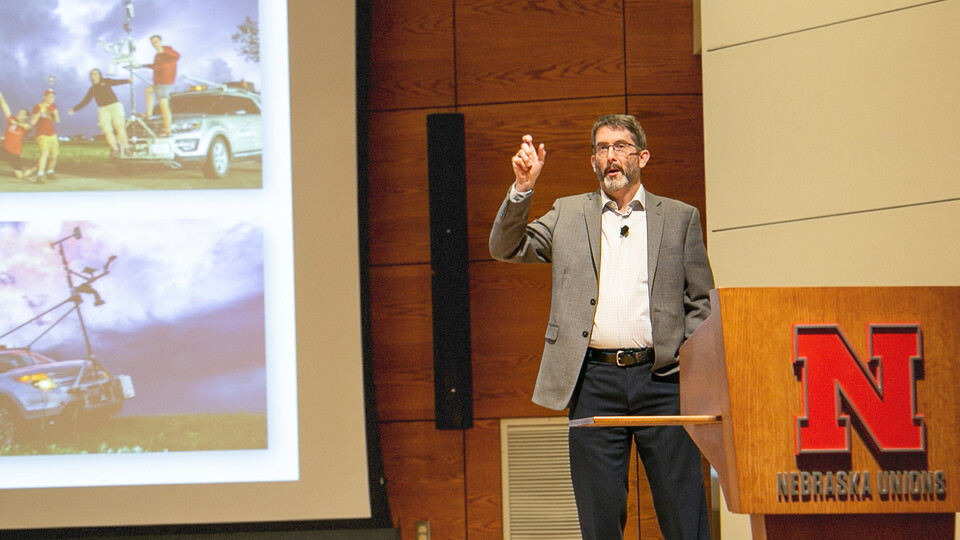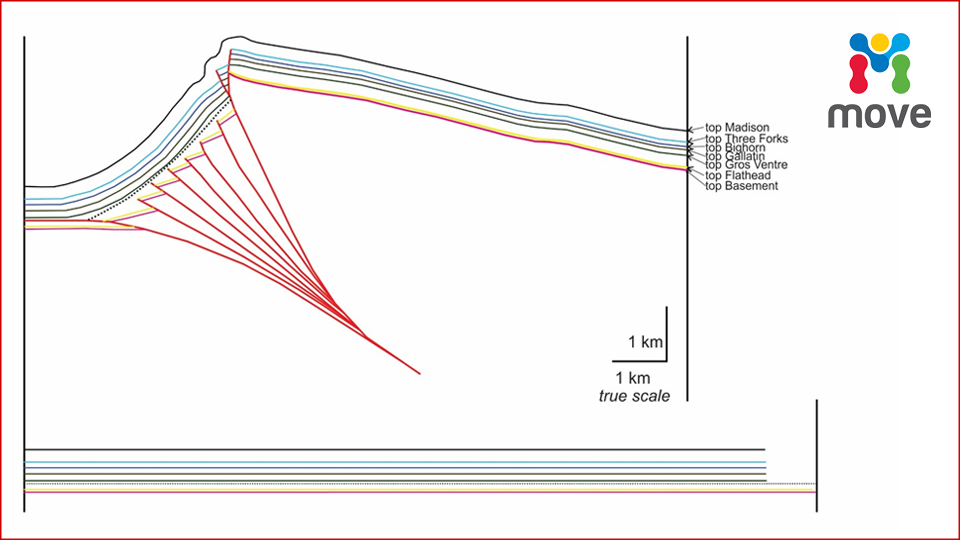
Photo above: A sandbox model of a shear zone created by 2018 MS alumnus Marques Hatfield, along with a restoration created by the model. Discrepancies between the results of the software analysis and the sandbox model are related to a phenomenon called penetrative strain. Penetrative strain is the strain accommodated on a sub-cross-section (that is, grain or outcrop) scale - not taken up by major thrusts or folds.
Engineering company Petroleum Experts donated over $2M in software for the department’s Jerome J. Wright and Alumni Computation and Visualization Laboratory.
The MOVE suite dynamically models oil reservoirs, production and injection wells and surface pipeline networks as an integrated production system.
In the lab, faculty and students use the software to model and analyze rock sequences deformed by geological processes such as mountain building. Users can digitally restore such deformed sequences back to their original configurations as flat-lying sediments. Accurate understanding of deformation is critical for reducing risk and uncertainty in geological models that underpin exploration for and extraction of natural resources, such as fossil fuels, minerals and water. Extraction industries use the software, giving students hands-on experience.
“Geology is a high tech science that relies on complex software to understand and visualize the processes that occur deep below the Earth’s surface. Such software would be out of reach without generous donations from companies such as Petroleum Experts. This software donation makes it possible for students to gain quantitative skills that are especially valued by the industries that employ geologists,” Tracy Frank, department chair and professor, said.
The new 20-seat lab serves as a learning commons, classroom and research facility for students and faculty. It was primarily funded by generous donations from alumni of Earth and Atmospheric Sciences.
Associate professor Cara Burberry’s students use the software to analyze natural systems as well as analog models of deformation produced in sandbox models in the laboratory. “The software has a great user-friendly interface that is easy for students to learn,” she said. “Students benefit by becoming familiar with industry-standard software and understanding the principles and mathematics that underlie the analyses performed by the software.”
Petroleum Experts, an engineering company, develops petroleum engineering software tools for the oil and gas industry worldwide. Learn more at petroleumexperts.com.



